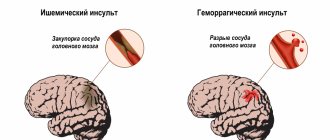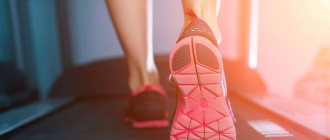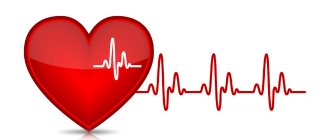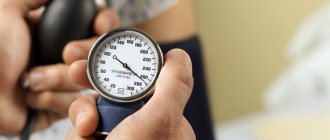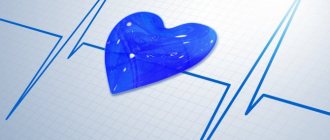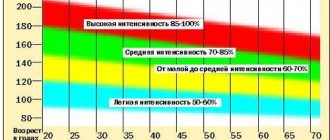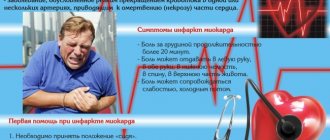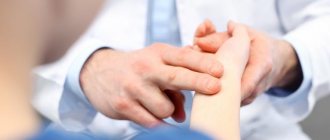Pulse and pressure
September 2, 2016
We all had our pulse and blood pressure taken. We know it doesn't hurt, but why are these indicators measured?
Whenever you visit a doctor or call an ambulance to your home, as a mandatory initial procedure, a specialist measures your pulse and blood pressure. But why is it so important to know these seemingly simple meanings of your body? And what do these numbers even mean? What are the reasons for high or low blood pressure? What are the dangers of an accelerated or, conversely, slowed heartbeat? To begin with, these two values show how the main part of a person works - the cardiovascular system. It is important because it is the blood that supplies oxygen and nutrients to all the cells of our body. Therefore, it is simply necessary to know when your so-called “river” system develops deviations in the form of contamination and decreased elasticity of the veins. So what pressure can be considered normal? Under what circumstances should you contact a specialist? Now let's look at all these aspects. Pulse. It, like pressure, has an extremely variable value. You've probably noticed how hard and fast your heart beats after exercise, and how uniform your heartbeat is at rest. There is no ideal value that everyone should strive for. In children, the heart contracts at a much higher rate than in an adult. On average, a reading of 65 - 75 beats per minute is considered normal. Therefore, when this value falls or rises by more than 20, it is already considered a deviation requiring prevention or treatment. For a healthy person, the rhythm of the heartbeat is also important. If the heart beats irregularly, it is called arrhythmia and is an extremely dangerous heart disease. A trained person involved in sports has a lower heart rate. This happens because the heart pumps more blood with each beat. Pressure. As with the pulse, everything is just as ambiguous here. The values depend on age, gender, physical activity and psycho-emotional situation. And everyone’s body is different, so the indicators may differ. We will talk about averages. When measuring blood pressure, we always hear two numbers, which are called the upper (systolic) and lower (diastolic) values. The first shows the force with which the blood presses on the walls of blood vessels during maximum contraction of the heart, and the second, on the contrary, in a resting situation. The difference between them is called pressure. On average, this difference should exceed 20 mmHg. Art. Low blood pressure leads to tachycardia, and high blood pressure is an indicator of atherosclerosis, heart failure, anemia, etc. It often happens to athletes that their average value is low, about 100/60, and yet they feel great. With age, the value increases. A newly born child has a normal measurement of 80/50 mm. rt. Art., and by the year of life it reaches 96/66 mm. rt. Art. In this regard, up to five years of age there is no difference between the sexes. At the age of 18-20 in men, 120/80 mm becomes satisfactory. rt. Art., and for girls 115/70 mm. rt. Art. By the age of seventy, the figures increase to 145/80-85 in the stronger sex and 155/85 mm. rt. Art. among representatives of the fair half of humanity. There is a concept called “working pressure”, at which the values may differ from the average, but the body still feels good. Therefore, try to always monitor your constant indicators. Moreover, with current technologies, this is available to everyone, just buy a tonometer. If you see that your cardiovascular system indicators are close to critical, immediately take care of your health: go to the doctor, start eating right and exercise. Remember that prevention is always easier and better than cure.
Tags:
- Prevention
- Pulse
- Arterial pressure
To leave a comment you must be an authorized user
Pulse
Pulse is the vibration of arterial walls that is associated with cardiac cycles. Such oscillations are jerky. In clinical practice, a distinction is made between capillary, venous and arterial pulses . The normal pulse of a healthy person is from 60 to 80 beats per minute.
Doctors were aware of the importance of measuring pulse back in ancient times. Scientists created treatises on the pulse and expressed various theories and assumptions. For example, a doctor from Constantinople described the connection between the pulse and malaria, dehydration, and anemia . Doctors from Tibet and Ancient China paid special attention to the pulse. Pulse diagnostics was used in surgical practice and was part of the clinical examination. There was even a rule according to which only a man who had been studying for at least thirty years could learn pulse diagnostics. Many centuries ago, a method of palpation of the pulse was invented, which is still used today.
Today, there are several methods that allow you to measure your pulse. All methods are in one way or another related to pulse wave analysis and heartbeat. hardware techniques are being developed , when various devices are used for analysis: an electrocardiograph, pulse oximeter, heart rate monitor, and traditional approaches , which are similar to those used in traditional medicine. Thus, all research methods can be divided into two groups:
- Hardware research methods
- Manual research methods
Today, practical medicine distinguishes a number of areas that are associated with the analysis of the rhythm of heart functions:
- Diagnosis of conduction disorders
- Screening for severe cardiac pathologies and various cardiomyopathies
- Monitoring cardiac function in the operating room and in critically ill patients
- Functional control in sports and general medical practice
- Monitoring the cardiotoxicity of drugs and other substances
The study of heart rhythm is also widespread for assessing stress levels. The cognitive aspects of the pulse are studied, which connect the structure of the heart rhythm and the mental sphere.
Arterial pulse
The arterial pulse is an oscillation of the arterial walls, which is associated with the fact that the arteries change their blood supply. Arterial pulse can be studied using the following methods:
- Inspection
- Palpation
In some cases, the pulsation of the arteries is pronounced and can be seen even during examination. An example is the so-called carotid dance - pronounced pulsation in the neck in the area of the carotid artery.
Palpation, with all the variety of hardware methods for studying the pulse, is the simplest and most reliable method, since it does not require special preparation before measurement. Palpation can be carried out in several places of the human body, where superficial arteries can be felt.
In the upper extremities, the pulse can be measured at the axillary artery - this is the axillary pulse, the brachial pulse is measured at the brachial artery, near the elbow, this method is usually used as an alternative to the carotid pulse measured in infants. The ulnar pulse is measured on the medial part of the wrist - on the ulnar artery. The radial artery allows you to measure the radial pulse, which is palpated on the lateral aspect of the wrist.
During palpation, the doctor is opposite the patient, feeling the pulsations on the left and right hands. After this, he simultaneously grasps the pulsation area of the patient’s right hand with three fingers of his left hand, and with his right hand, respectively, on the left. Based on his own sense of touch, the specialist determines the absence or presence of the arterial pulse in size and filling, thus determining the symmetry of the pulse. Then the doctor gives the remaining characteristics: shape, height, tension, rhythm. There are different ways to count the pulse, but it is recommended to carry out a full count within a minute, as the frequency can change sharply with arrhythmias . The next stage of pulse palpation is to determine the absence or presence of pulse deficiency. This type of research is carried out simultaneously by two people. One counts your heart rate and the other counts your pulse rate . Next, the results obtained are compared. Normally, they should be equal, but for various diseases, such as arrhythmias, for example, they differ.
In addition to the upper extremities, the pulse can be measured on the head and neck (temporal pulse - on the superficial temporal artery, facial pulse - on the facial artery on the lower edge of the jaw, carotid pulse - on the carotid artery, which is located in the neck, however, excessive compression of such an artery can lead to to cerebral ischemia or fainting), torso (the apical pulse is measured, which is palpated outside the midclavicular line).
Pulse frequency is a value that reflects the number of oscillations of arterial walls per unit time. There are frequent pulses - over 90 beats per minute, rare - less than 60, and moderate - 60-80 beats per minute.
In addition, there is an arthymic pulse , the intervals between successive waves are different, and a rhythmic pulse with the same intervals.
Based on filling, that is, the volume of blood in the artery, the following types of pulse are distinguished: thread-like, that is, a barely perceptible pulse; an empty pulse that is difficult to palpate; a full pulse, in which the artery is filled beyond normal, and a moderate filling pulse.
Venous pulse
The venous pulse is the pulsation of the veins in the neck, as well as other large veins that are located directly near the heart. Such a pulse cannot be traced in the peripheral veins.
In clinical practice, a distinction is made between negative and positive venous pulses. The filling of the arteries is normally accompanied by the collapse and emptying of the veins; in this case, a negative venous pulse occurs. When the tricuspid valve has any pathology, the filling of the veins can be combined with the filling of the arteries - this is a positive venous pulse.
Capillary pulse
Capillary pulse is a change in the intensity of the color of the nail bed, hyperemic skin, which occurs synchronously with the arterial pulse. Since the blood flow in the capillaries in a healthy person is continuous, the presence of such a pulse is not the norm. Its appearance is associated with a large difference between diastolic and systolic pressure, so the precapillary sphincters cannot cope with their work. Many pathological conditions are accompanied by this deviation, but first of all, capillary pulse is observed with aortic valve insufficiency.
There are several methods that allow you to detect the presence of this type of pulse:
- With slight pressure on the end of the nail bed in a healthy person, half of the pressed part turns pale, and in addition, a clear boundary appears that does not change its position until the pressure is relieved. With aortic valve insufficiency, rhythmic redness and blanching of the pressed nail bed occurs.
- Also, the presence of a capillary pulse can be detected by pressing a cover slip to the mucous membrane of the lip. If there is a rhythmic contraction, then there is a capillary pulse.
- The capillary pulse is also detected by rubbing the skin on the forehead. If paleness or redness is observed in the hyperemic area, this is a capillary pulse.
Helpful information
Many of us love summer and look forward to it. But as soon as the mercury column crosses the mark of 25-27 degrees, we begin to longingly remember a more comfortable temperature.
With our beloved summer comes the heat! When it is very hot, even completely healthy people may experience health problems: increased heart rate, shortness of breath, a feeling of lack of air (fumes from asphalt, exhaust gases and smog force the body to work in a chronic lack of oxygen mode), dizziness, tightness in the chest, etc. .d. All this is the result of increased stress on the heart on hot summer days. People with cardiovascular diseases are especially vulnerable during this period. In the heat, hypertensive patients feel worse; patients with coronary heart disease (CHD) are more likely to experience angina attacks. Therefore, those who suffer from diseases of the cardiovascular system, and in principle, even healthy people, should adhere to some rules that will allow them to keep their heart healthy for as long as possible.
1. Who is more susceptible to cardiovascular diseases?
Coronary heart disease and hypertension are more common among men under the age of forty. Women under forty have a powerful protective factor - the sex hormones estrogens, which maintain the tone of blood vessels and normal cholesterol levels. But after menopause, the level of estrogen in the blood decreases, and the incidence of heart disease in women quickly catches up with men. But it is worth paying attention to the fact that if a woman smokes more than 20 cigarettes a day, no hormones will save her, and her risk of developing myocardial infarction at a young age is exactly the same as that of a man. Plus, if a person leads a sedentary lifestyle, has extra pounds, is often in stressful situations and prefers to eat fatty foods, then the development of cardiovascular diseases at a young age is very likely.
2. How does heat affect the functioning of the heart?
Genetically, we are adapted to mild summer temperatures up to +25-27°C, so the record levels to which the mercury columns of our thermometers can rise today are not in vain for the cardiovascular system and the body as a whole. During extreme heat, people with weak hearts experience increased heart rate, increased blood pressure, dilated peripheral blood vessels, swollen legs, and an increased likelihood of blood clots. Sudden temperature changes are especially harmful to health. At first, the work of the heart is helped by the body's reserve forces, but they are not unlimited. Therefore, the cardiovascular system must be supported during this period.
3. How to reduce the load on the heart during the hot season?
1. First of all, it is recommended to pay attention to your diet. It is advisable to exclude fatty and heavy foods from it, minimize the consumption of salt and salty foods. The basic principle is light food and a little bit at a time. Eat more vegetables and fruits (try to eat more raspberries, as they thin the blood); give preference to lean sea fish rather than meat; use exclusively vegetable oils (walnut oil, wheat germ oil, almond oil, pumpkin oil). However, in any case, you should not overeat healthy foods.
2. Always remember that in the heat the body loses fluid, which should be replenished. Be sure to drink at least 1.5 - 2 liters of fluid per day to maintain water-salt balance.
What's better to drink? Just do not drink carbonated drinks (especially those with high sugar content), coffee and caffeine-containing drinks, and alcohol. These drinks do not quench thirst, and the latter not only dilate blood vessels, causing stress on the heart, but also contribute to the release of heat from the body and “overheating.” Among drinks, give preference to water - both regular and mineral, and cool herbal teas. Also drink freshly squeezed juices and fermented milk products.
3. We reduce physical activity to a minimum. This is especially true for lovers of dachas and vegetable gardens. Therefore, for summer residents (especially those with diseases of the cardiovascular system), there are some recommendations that are worth paying special attention to:
• You cannot weed the beds while bending over and lowering your head. This position disrupts the flow of blood from the head - a sharp rise in blood pressure may occur, up to loss of consciousness and stroke;
• Remember the work schedule: work for 30-40 minutes, rest for 15-20. If you experience shortness of breath, interruptions in heart function, weakness, dizziness, or even worse - chest pain, immediately stop any physical activity;
• It is best to work before 10-11 o'clock in the afternoon and after 16 o'clock;
• If you have heart problems, always keep heart medications and blood pressure lowering medications in your personal first aid kit. Moreover, the last two medicines should be kept in your pocket - just in case.
4. During the hottest part of the day, try not to go outside. Avoid sudden temperature changes. Stay in the sun for no more than 15-20 minutes. If you feel tachycardia or shortness of breath, immediately take cover in the shade or go into a cool room.
5. If you smoke, then try to at least limit the number of cigarettes you smoke per day, because Smoking prevents the blood from filling with oxygen and therefore causes vasospasm.
6. Do not seek relief from the heat in too cool water. It is especially dangerous for patients with ischemia to enter hot water. This can lead to additional vasospasm. And here you are only half a step away from an attack of angina pectoris and even a heart attack.
7. Always wear a hat.
8. Follow the recommendations given by your doctor.
The information was prepared by cardiologist I.P. Kosheleva.
